Abstract
Substantial world-wide resources are being committed to develop improved toxicological testing methods that will contribute to better protection of human health and the environment. The development of new methods is intrinsically driven by new knowledge emanating from fundamental research in toxicology, carcinogenesis, molecular biology, biochemistry, computer sciences, and a host of other disciplines. Critical evaluations and strong scientific consensus are essential to facilitate adoption of alternative methods for use in the safety assessment of drugs, chemicals, and other environmental factors. Recommendations to hasten the development of new alternative methods included increasing emphasis on the development of mechanism-based methods, increasing fundamental toxicological research, increasing training on the use of alternative methods, integrating accepted alternative methods into toxicity assessment, internationally harmonizating chemical toxicity classification schemes, and increasing international cooperation to develop, validate, and gain acceptance of alternative methods.
Full text
PDF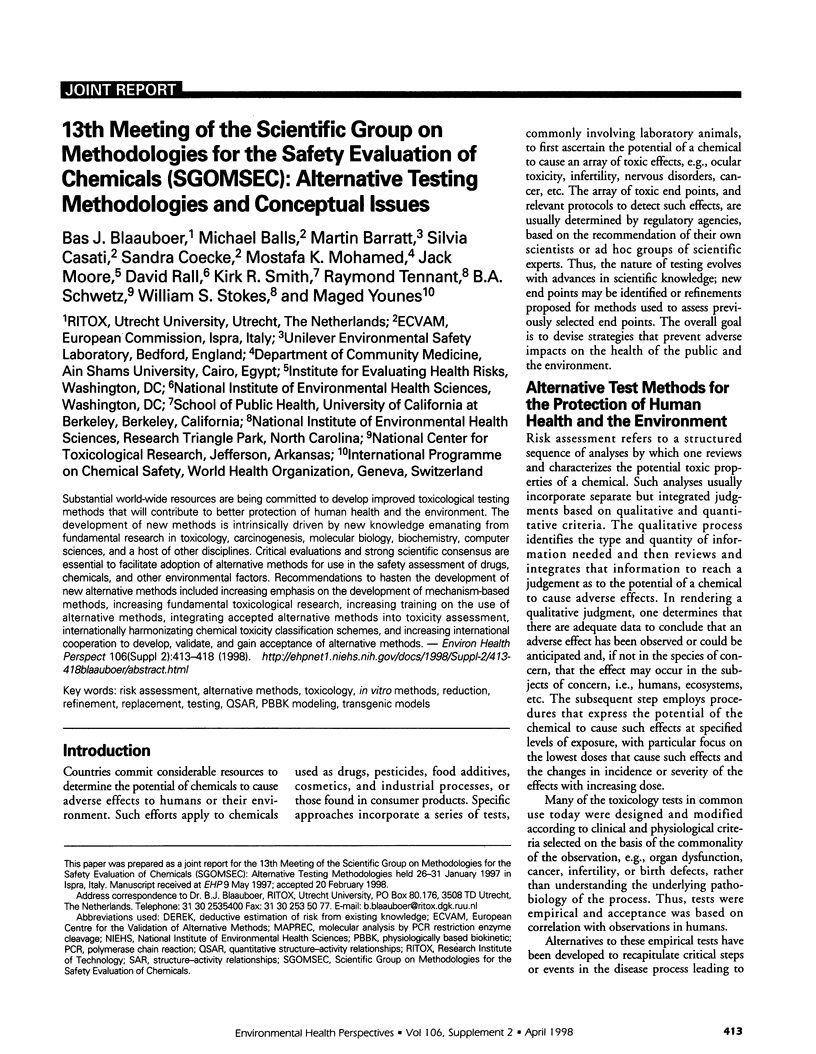
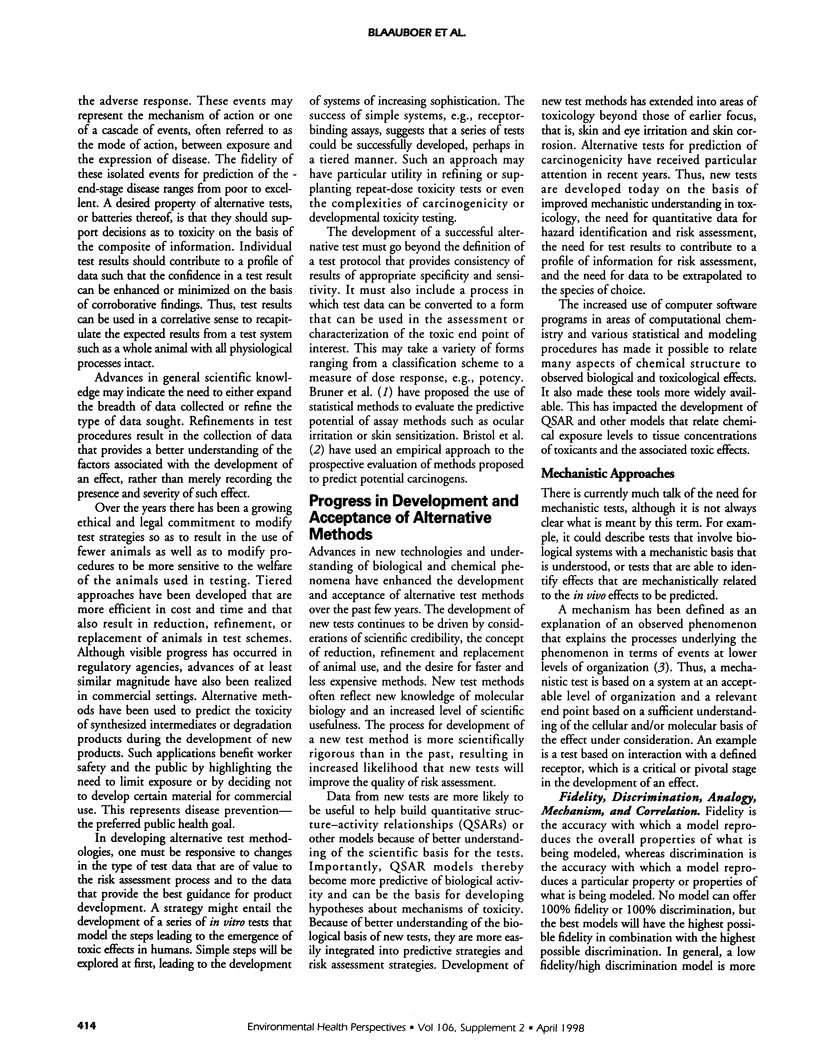
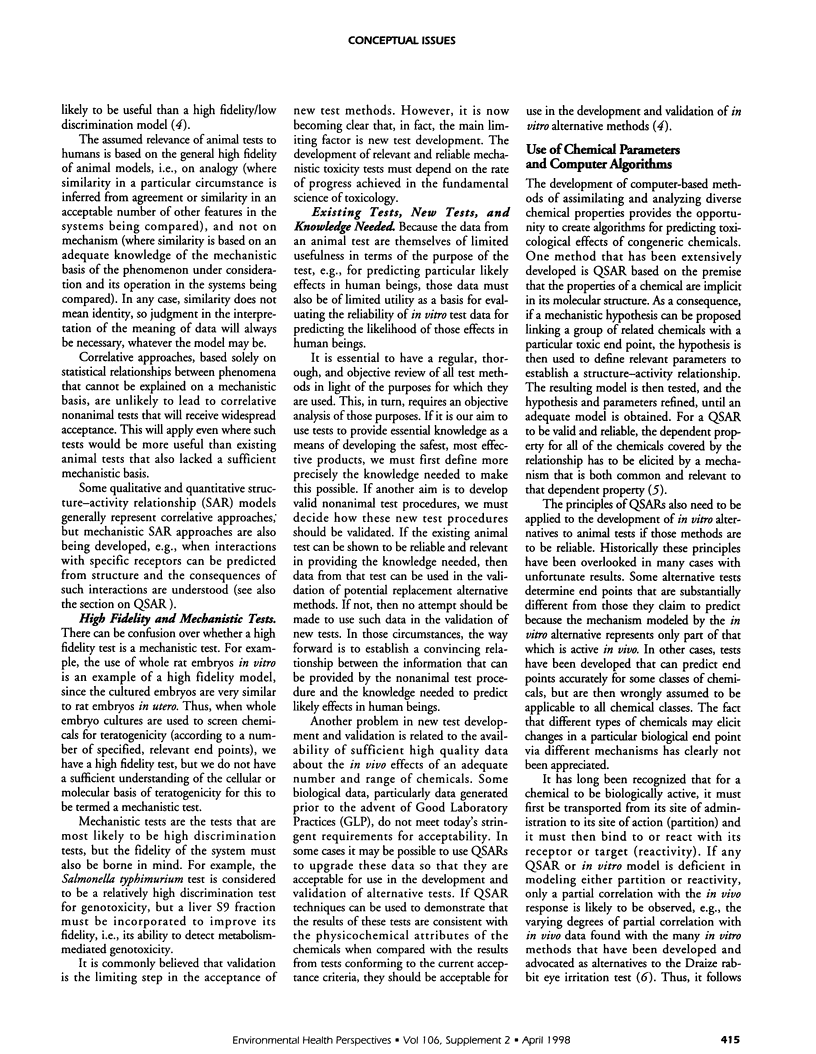
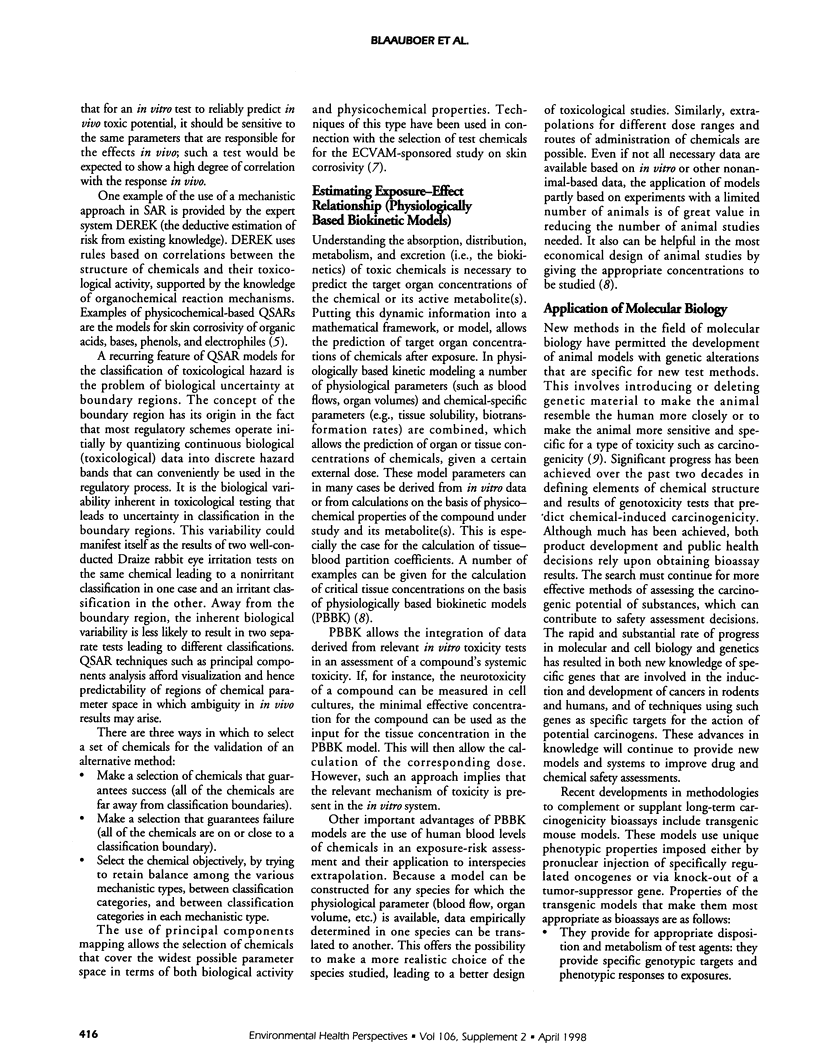
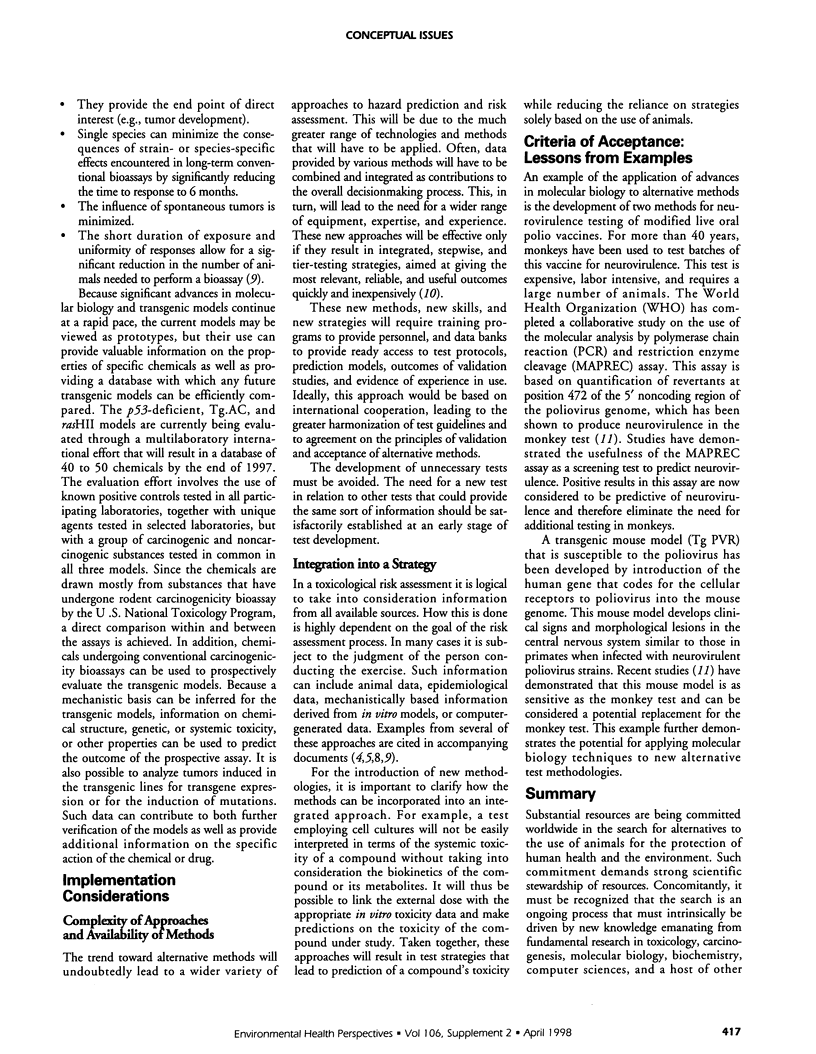
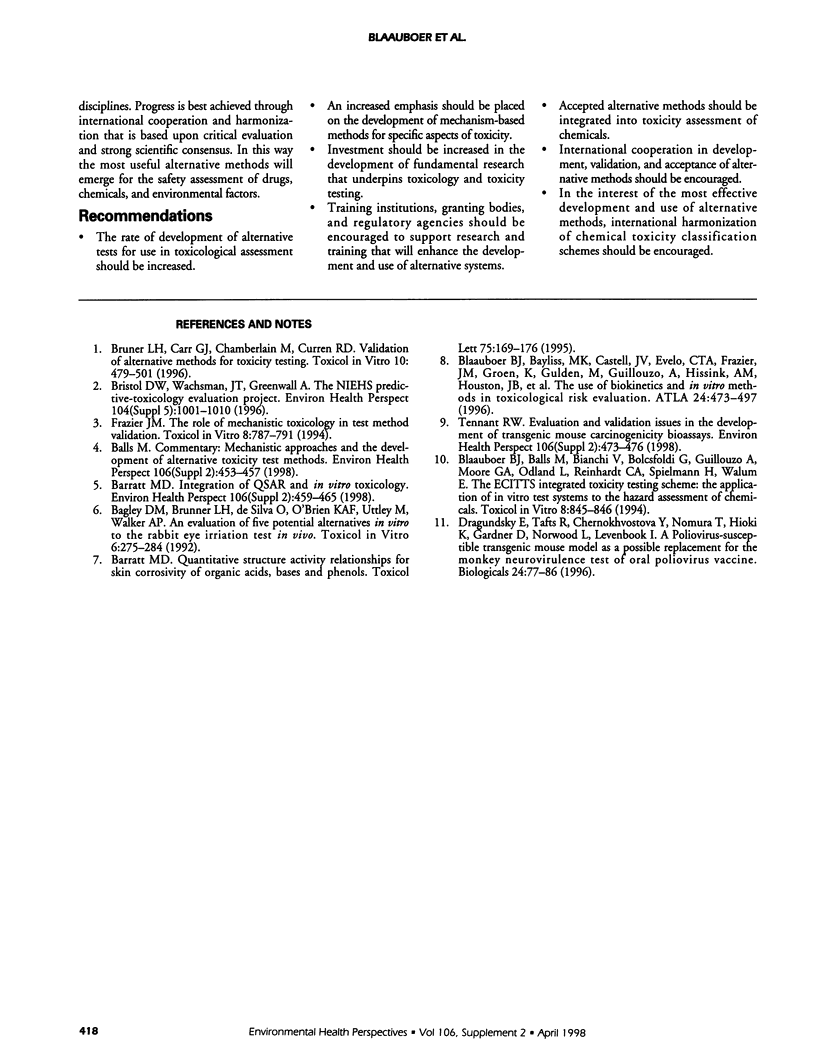
Selected References
These references are in PubMed. This may not be the complete list of references from this article.
- Balls M. Mechanistic approaches and the development of alternative toxicity test methods. Environ Health Perspect. 1998 Apr;106 (Suppl 2):453–457. doi: 10.1289/ehp.98106453. [DOI] [PMC free article] [PubMed] [Google Scholar]
- Barratt M. D. Integration of QSAR and in vitro toxicology. Environ Health Perspect. 1998 Apr;106 (Suppl 2):459–465. doi: 10.1289/ehp.98106459. [DOI] [PMC free article] [PubMed] [Google Scholar]
- Barratt M. D. Quantitative structure activity relationships for skin corrosivity of organic acids, bases and phenols. Toxicol Lett. 1995 Jan;75(1-3):169–176. doi: 10.1016/0378-4274(94)03177-9. [DOI] [PubMed] [Google Scholar]
- Bristol D. W., Wachsman J. T., Greenwell A. The NIEHS Predictive-Toxicology Evaluation Project. Environ Health Perspect. 1996 Oct;104 (Suppl 5):1001–1010. doi: 10.1289/ehp.96104s51001. [DOI] [PMC free article] [PubMed] [Google Scholar]
- Dragunsky E., Taffs R., Chernokhvostova Y., Nomura T., Hioki K., Gardner D., Norwood L., Levenbook I. A poliovirus-susceptible transgenic mouse model as a possible replacement for the monkey neurovirulence test of oral poliovirus vaccine. Biologicals. 1996 Jun;24(2):77–86. doi: 10.1006/biol.1996.0010. [DOI] [PubMed] [Google Scholar]
- Tennant R. W. Evaluation and validation issues in the development of transgenic mouse carcinogenicity bioassays. Environ Health Perspect. 1998 Apr;106 (Suppl 2):473–476. doi: 10.1289/ehp.98106473. [DOI] [PMC free article] [PubMed] [Google Scholar]


